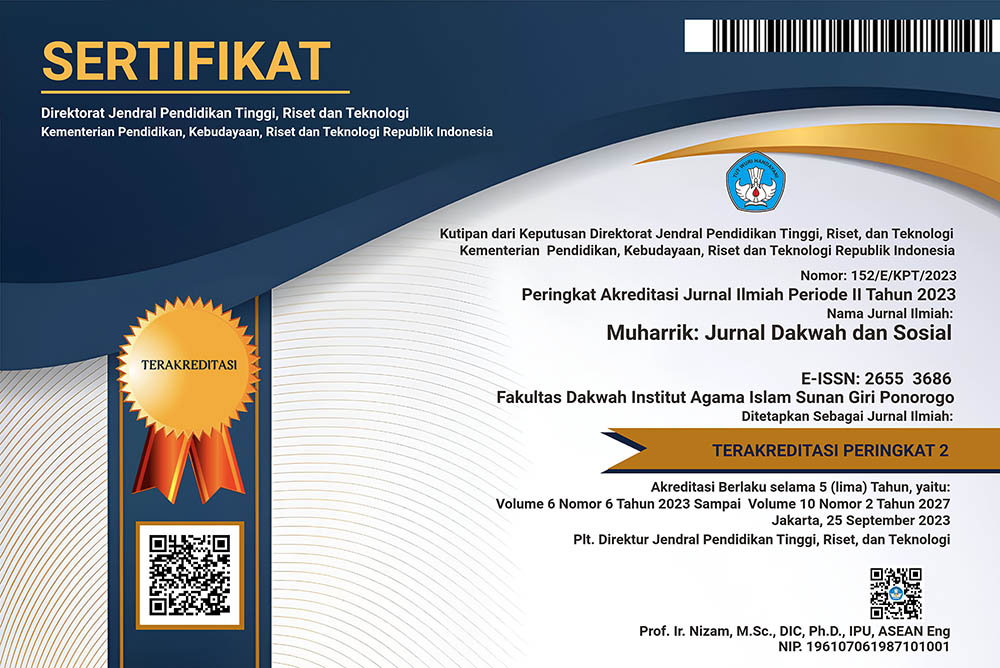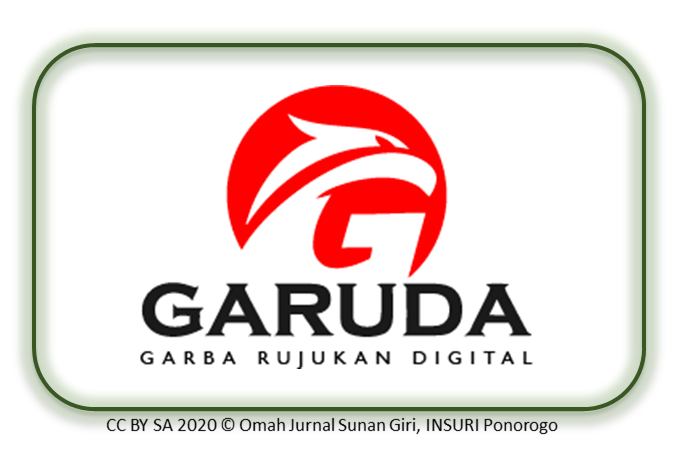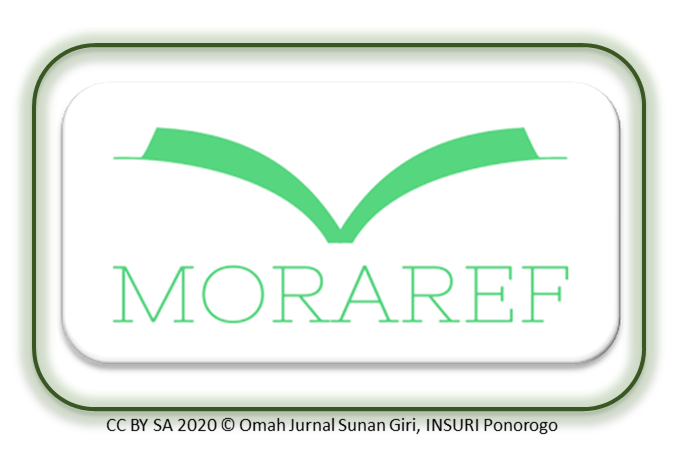Local Wisdom-Based Da'wah Rhetoric: Analysis of Guru’s Communication Styles in South Kalimantan
DOI:
https://doi.org/10.37680/muharrik.v8i1.7762Keywords:
communication style, da'wah rhetoric, local wisdomAbstract
Although previous studies have examined rhetorical strategies in da’wah (Islamic preaching), limited attention has been given to how these strategies adapt to specific local cultures. This study addresses that gap by exploring how Islamic preachers (Guru) in South Kalimantan incorporate Banjar cultural values into their rhetorical practices to enhance message relevance and audience engagement. The study aims to identify the dominant rhetorical styles used, explain how they draw from local wisdom, and assess their communicative impact. A qualitative-descriptive method within the ethnography of communication framework was employed. Data were collected through direct observation, in-depth interviews with preachers and congregants, and sermon documentation. Thematic coding and interpretive analysis were used to link rhetorical patterns with Banjar cultural elements. Findings reveal three dominant rhetorical styles: (1) persuasive-narrative, utilizing local folklore such as Hikayat Datu Kalampayan; (2) religious humor, incorporating Banjar comedic expressions to build rapport; and (3) symbolic-cultural references, invoking values like baimbai (cooperation) and adat basambangan (etiquette in interaction). These strategies reduce social distance, strengthen emotional connection, and improve audience receptivity. The study contributes theoretically by highlighting the cultural embedding of rhetorical forms in localized da’wah. Practically, it offers a model for preachers to contextualize messages effectively. It also suggests integrating cultural adaptation training into preacher development programs.
Downloads
References
Adam, M. (2020). Persuasion in religious discourse: Employing humour to enhance persuasive effect in sermons. In Persuasion in Specialised Discourses (pp. 197–227). Springer International Publishing.
Afisi, O. T. (2020). The concept of semiotics in Charles sanders Peirce’s pragmatism. Trends in Semantics and Pragmatics.
Agung, D. A. G., Nasih, A. M., & Kurniawan, B. (2024). Local wisdom as a model of interfaith communication in creating religious harmony in Indonesia. Social Sciences & Humanities Open, 9, 100827. https://doi.org/https://doi.org/10.1016/j.ssaho.2024.100827
Anwar, K., Saefulloh, A., Surawan, S., & Nalus, S. (2025). Dayak Ngaju Customary Sanctions as a Rehabilitation Mechanism for Drug Addicts in Central Kalimantan. El-Mashlahah, 15(1), 165–188. https://doi.org/http://dx.doi.org/10.23971/el-mashlahah.v15i1.9813
Anwar, K., & Surawan, S. (2024). Traditional Versus Digital Media in Predicting the Impact of Islamic Religious Knowledge on Life Satisfaction and Well Being. International Journal of Arts and Social Science, 7(3), 119–133. www.ijassjournal.com
Anwar, K., Surawan, S., & Awang, S. (2024). Social Media And Religiousity : Shifting The Lifestyle Paradigm Of Urban Muslim Students. Akademika: Jurnal Pemikiran Islam, 29(2). https://doi.org/10.32332/akademika.v29i2.9181
Arisa, V. (2025). An Analysis Of Ethos, Logos, And Pathos Persuasion Strategies In Heejae Lim’s Speech. Doctoral dissertation UIN Raden Intan Lampung.
Ayton, D. (2023). Qualitative descriptive research. In Qualitative Research – a practical guide for health and social care researchers and practitioners.
Aziz, A., Rahmah, M., & Afifah, N. (2025). Da’wa Communication Model in Indonesia and Malaysia. Jurnal Dakwah Risalah, 36(1), 16–36. http://dx.doi.org/10.24014/jdr.v36i1.29936
Baldwin, J. R., González, A., Brock, N., Xie, M., & Chao, C. C. (2023). Intercultural communication for everyday life. John Wiley & Sons. John Wiley & Sons.
Ballano, V. (2020). Inculturation, anthropology, and the empirical dimension of evangelization. Religions, 11(2), 101. https://doi.org/https://doi.org/10.3390/rel11020101
Benford, R. D., & Snow, D. A. (2000). Identity fields: Framing processes and the social construction of movement identities. Annual Review of Sociology, 26(2000), 611–639. https://doi.org/https://doi.org/10.1146/annurev.soc.26.1.611
Bouma, J. A. (2021). Preaching Humor for Spiritual Formation. Indiana Wesleyan University.
Bromhead, H., & Ye, Z. (2020). Meaning, life and culture: In conversation with Anna Wierzbicka. ANU Press.
Budiyono, A., Azizah, N., Ridwan, A., & Prasetyo, B. (2025). Adaptation of the Islamic Guidance and Counseling Curriculum : Cultural Integration and Da’wah. Ilmu Dakwah: Academic Journal for Homiletic Studies, 19(1), 75–96. https://doi.org/10.15575/idajhs.v19i1.38537
Car, P. (2022). Implementation and Effects of Humour in the Language Classroom. University of Zagreb. Faculty of Teacher Education. https://urn.nsk.hr/urn:nbn:hr:147:725227
Chandrasari, N., Izdihar, R. S., Risyafa, Z. A., & Nazar, I. A. B. U. (2025). Cultural da ’ wah approach to environmental conservation on the local wisdom of Javanese communities, Indonesia. Dakwah & Islamic Outreach, 1(1), 26–37. https://doi.org/10.13057/dio/i010103
Chang, T.-Y., & Chuang, Y.-J. (2021). Cultural sustainability: teaching and design strategies for incorporating service design in religious heritage branding. Sustainability, 13(6), 3256. https://doi.org/https://doi.org/10.3390/su13063256
Cutri, J., Freya, A., Karlina, Y., Patel, S. V., Moharami, M., Zeng, S., Manzari, E., & Pretorius, L. (2021). Academic integrity at doctoral level: the influence of the imposter phenomenon and cultural differences on academic writing. International Journal for Educational Integrity, 17(1), 1–16. https://doi.org/10.1007/s40979-021-00074-w
Deuman, J. T. (2019). Using Comedy to Build Community in Local Churches : How Laughing Together Can Bring People Together. Doctor of Ministry, 321. https://digitalcommons.georgefox.edu/dmin/321%0AThis
E-sor, A., Mahmudulhassan, M., Abuzar, M., Ahmed, E., Khondoker, S. U. A., Riazul, S. M., & Rahman, O. (2025). Islamic Communication in the 21st Century: Principles, Methods, Practices, Digital Transformation and Contemporary Applications. Bulletin of Islamic Research, 3(4), 571–594. https://doi.org/https://doi.org/10.69526/bir.v3i4.354
Eller, J. D. (2021). Introducing anthropology of religion: culture to the ultimate. Routledge.
Enos, R. L., & Lauer, J. M. (2020). The meaning of heuristic in Aristotle’s Rhetoric and its implications for contemporary rhetorical theory. In Landmark Essays on Aristotelian Rhetoric (pp. 203–212). Routledge.
Fitria, A. A., & Khoirunnisa, A. N. (2024). The Past and Present , Saparan Bekakak of Ambar Ketawang : A study of Cultural Transformation. Abjad Journal of Humanities & Education, 2(3), 114–129. https://doi.org/10.62079/abjad.v2i3.55
Fitriani, A., & Surawan, S. (2025). The Power of Quotes : Bagaimana Kata-Kata Positif Memengaruhi Kesehatan Jiwa dan Emosi. Jurnal Ilmiah Penelitian Mahasiswa, 3(4), 709–717. https://doi.org/https://doi.org/10.61722/jipm.v3i4.1145
Ford, T. E. (2021). The social psychology of humor. Routledge.
Fuhse, J. (2021). Social networks of meaning and communication. Oxford University Press.
Geertz, C. (2005). Shifting aims, moving targets: On the anthropology of religion. Journal of the Royal Anthropological Institute, 11(1), 1–15. https://doi.org/10.1111/j.1467-9655.2005.00223.x
Haliza, N., & Surawan, S. (2025). The Influence of Spirituality on The Mental Health Impact of TikTok Scrolling in University Students. Journal of Islamic Education and Ethics, 3(2), 118–133. https://doi.org/https://doi.org/10.18196/jiee.v3i2.92 The
Hammerin, Z., Westerlund, J., & Basic, G. (2025). Merging Didactic and Relational Competence: A Student Perspective on the Teacher’s Role in Working with Student Health. Education Sciences, 15(7), 856. https://doi.org/https://doi.org/10.3390/educsci15070856
Hanum, S. Z., Farizi, M. Al., & Awang, S. (2023). Interpersonal Communication Da’i; Analysis of Da’wah Styles on YouTube. Jurnal Mediakita: Jurnal Komunikasi Dan Penyiaran Islam, 7(2), 164–176. https://doi.org/10.30762/mediakita.v7i2.1024
Hargie, O. (2021). Skilled interpersonal communication: Research, theory and practice. Routledge.
Hasanah, U., Holilah, I., & Abdullah, S. F. B. S. (2025). New Ustazah: Hijrah & Transformation of Da’wah Authority among Celebrities in Indonesia. Jurnal Dakwah Risalah, 36(1), 1–15. https://doi.org/10.24014/jdr.v36i1.35926
Hawkins, M. (2000). Becoming Banjar: Identity and Ethnicity in South Kalimantan, Indonesia. The Asia Pacific Journal of Anthropology, 1(1), 24–36. https://doi.org/https://doi.org/10.1080/14442210010001705830
Herrick, J. A. (2020). The history and theory of rhetoric: An introduction. Routledge.
Husband, G. (2020). Ethical data collection and recognizing the impact of semi-structured interviews on research respondents. Education Sciences, 10(8), 206. https://doi.org/https://doi.org/10.3390/educsci10080206
Isfironi, M. (2025). Transformative Islamic Da’wah: Back to Local Wisdom Values. Jurnal Al-Hikmah, 23(1), 1–16. https://doi.org/https://doi.org/10.35719/j9qsty82
Karimullah, S. S. (2024). The Use of music in islamic da’wah and its impact on audience emotional response. Jurnal Ilmu Dakwah, 44(2), 217–236. https://doi.org/10.21580/jid.v44.2.20293
Liu, S., Gallois, C., & Volcic, Z. (2023). Introducing intercultural communication: Global cultures and contexts. Sage Publications.
Mawarni, S., & Muthoifin, M. (2024). Da’wah in the Modern Era: Adapting Tradition with Innovation. Solo International Collaboration and Publication of Social Sciences and Humanities, 2(02), 181–192. https://doi.org/10.61455/sicopus.v2i02.150
Mezmir, E. A. (2020). Qualitative Data Analysis: An Overview of Data Reduction, Data Display and Interpretation. Research on Humanities and Social Sciences, 10(21), 15–27. https://doi.org/10.7176/rhss/10-21-02
Nasution, I., & Salam, S. (2024). Islamic Dakwah Strategy in the Cambodian Camp Community: An Analysis of Challenges and Opportunities. Feedback International Journal of Communication, 1(3), 153–164. https://doi.org/10.62569/fijc.v1i3.58
Natow, R. S. (2020). The use of triangulation in qualitative studies employing elite interviews. Qualitative Research, 20(2), 160–173. https://doi.org/https://doi.org/10.1177/1468794119830077
Ningsih, A. M., & Surawan, S. (2025). Eksplorasi Makna Dakwah Digital Terhadap Pertumbuhan Spiritual Mahasiswa. JUPERAN: Jurnal Pendidikan Dan Pembelajaran, 04(02), 401–411. https://ojs.smkmerahputih.com/index.php/juperan/article/view/886
Norhidayah, S. (2025). Hijrah dan Transformasi Diri: Representasi Makna Spiritual Dalam Konten Tiktok Dengan Tagar# Kisahhijrah. Millatuna: Jurnal Studi Islam, 2(03), 111–127. https://doi.org/https://doi.org/10.33752/mjsi.v2i03.9082
O’Boyle, N. (2022). Narrators: A Narrative Approach to Human Communication. In Communication Theory for Humans: Communicators in a Mediated World (pp. 51–76). Springer.
Priandhita, R. (2020). Religious and Cultural Practices of Menstruation: Banjar Ethnic Women, Indonesia. The Australian National University.
Rafiqoh, P. A. H. (2025). Ethnography of Communication: the Way of Speaking in the Banjar Community of South Kalimantan. Jurnal Common, 9(1), 1–13. https://doi.org/10.34010/5z0szw26
Rahmah, S., & Aslamiah, R. (2023). Understanding the Urgency of Da’wah of Islam in the Context of Peace in the Nuances of Pluralism in Indonesia. International Research Journal of Management, IT and Social Sciences, 10(2), 110–121. https://doi.org/https://doi.org/10.21744/irjmis.v10n2.2295
Rangkuti, S. S., Zulhimma, Z., & Zulhammi, Z. (2022). Character Building In Cultural Perspective and Implementation. AL-ISHLAH: Jurnal Pendidikan, 14(3), 4557–4566. https://doi.org/10.35445/alishlah.v14i3.2049
Ridho, A., & Sa’ad, A. (2025). Reconstruction of Theological Narrative: Integration of Local Wisdom into Religious Practices for Social Cohesion in Multicultural Societies of Southeast Asia. Islam Transformatif : Journal of Islamic Studies, 8(2), 220–242. https://doi.org/10.30983/it.v8i2.8761
Rofiqoh, Y. I. A., Alvino, A. T., Chusae, A., & Nizar, Y. A. (2021). Islam and Syncretism in Java: Reflections on the Thought of Geertz and Woodward. MUHARRIK: Jurnal Dakwah Dan Sosial, 4(01), 47–61. https://doi.org/https://doi.org/10.37680/muharrik.v4i01.634
Rosidin, R., Bachri, S., Mardhatillah, M., Kawakip, A. N., & Ja'far, H. (2022). Pesantren Tangguh As a Moderate Islamic Education Institution During the Covid-19 Pandemic. Analisa: Journal of Social Science and Religion, 7(1), 55–72. https://doi.org/10.18784/analisa.v7i1.1639
Saumi, R. I., & Widiastuty, H. (2024). Patrick Star As a Modern Islamic Da’Wah Medium in the Perspective of Gen Z Muslim Men and Women. International Proceedings Universitas Tulungagung, 229–240. https://www.conference.unita.ac.id/index.php/conference/article/view/193
Scheel, T., & Zekavat, M. (2025). Humour and laughter in communication. In The Handbook of Communication Skills (pp. 339–370).
Setiawan, D. (2025). Multicultural da’wah strategy: An inclusive approach in promoting tolerance and social harmony in plural societies. Islamic Perspective on Communication and Psychology, 2(1), 56–67. https://doi.org/10.61511/ipercop.v2i1.2025.1677
Sirait, R. (2024). Making Islam great again: the rise of digital preachers in Indonesia. Doctoral Thesis, The University of Western Australia.
Widyanti, T., & Syah, R. (2025). Internalization of Social Values Based on Local Wisdom “Sundanese Proverbs” in Social Studies Learning. Journal of Social Studies Education, 1(1), 28–36. https://doi.org/10.71094/josse.v1i1.88
Yusuf, M., Nahdhiyah, N., & Marjuni, K. N. (2022). Building Character of Bugis Community in Bone From The Perspective of Quran and Local Wisdom. El Harakah, 24(2), 193–220. https://doi.org/10.18860/eh.v24i2.17047
Zurvani, M., & Zarei, S. (2024). Examining Clifford Geertz's Cultural Approach to the Semiotics of Religion. The International Journal of Humanities, 31(4), 48–69. https://doi.org/http://dx.doi.org/10.48311/eijh.31.4.48
Downloads
Published
How to Cite
Issue
Section
License
Copyright (c) 2025 Mariyatul Norhidayati Rahmah, Nahed Nuwairah, Najla Amaly, Samsul Rani

This work is licensed under a Creative Commons Attribution-NonCommercial 4.0 International License.
The author(s) retain/s the copyright and grant/s Muharrik: Jurnal Dakwah dan Sosial the first publication rights licensed under the Creative Commons Attribution-NonCommercial 4.0 International (CC BY-NC 4.0) , which allows others to access (search, read, download and quote), share (copy and redistribute the material in any media or format) and adapt (mix, modify and develop) works for legitimate non-commercial purposes, with recognition of the authorship of the work and its initial publication in this journal.












